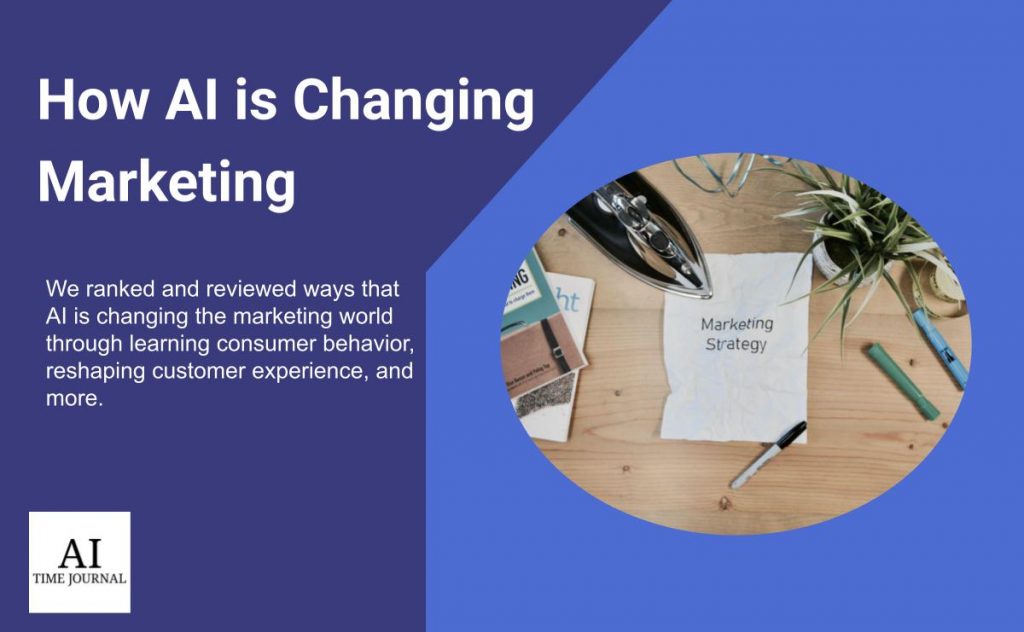
In the digital area, the application of artificial intelligence (AI) has spread to all walks of life. Now, we begin to wonder: how is AI changing marketing?
With AI, machines are capable of working and solving problems with high efficiency and accuracy. By doing the jobs, including collecting information, analyzing data, and learning from previous cases, AI can generate priorities and effective marketing strategies for organizations to identify and attract the target audience. To learn more about marketing and AI, check out this podcast episode on refining marketing strategy with AI.
There is no doubt that the prevalent application of AI will promote an automation revolution in the marketing industry, especially digital marketing, and bring both challenges and opportunities for the industry. Here are five ways that AI is changing in the marketing field:
Learn Consumer Behavior
One of the most important tasks for marketers is to correctly understand consumer behavior, and now, AI plays an essential role in assisting marketers by collecting personal information online. The Internet is a double-edged sword. While it opens the door to the information age for its users, it also keeps the users’ online traces for AI to remember and learn. By learning from what people are searching, viewing, and buying online, AI can create a big database about consumer behavior for marketers. With AI and its automatic learning ability, marketers’ understanding of consumer behavior will be more precise than through their observations and investigations.
Scuba is a tool with AI for digital marketing use. It can collect and analyze people’s online personal data for real-time analytics, tracking, and monitoring of customer behavior. By using digital marketing tools like Scuba, companies can generate quick actions and effective solutions based on learning from customer experience and behavior.
Personalize Content Creation—Product Recommendations
AI can not only help sellers to understand the needs and behavior of consumers but also can specify this information to individuals and then personalize content creations. For most consumers, it is common to see emails, messages, and pop-ups with product recommendations that catch their eyes and cater to their preferences. AI has become the leading contributor to advertisement personalization. With the help of AI, marketers can improve their working efficiency and increase positive responsiveness by promoting the correct products to customers based on their personal interests.
A perfect example of how digital marketing personalizes content creation is the product recommendation function on shopping websites. For instance, Nordstrom’s website always provides its online customer with several recommendation lists, such as “Recommend for you,” “You might also like,” “Recently viewed,” and “People who are viewing this product also like.” You may find it hard not to notice these lists, and the products in the list do catch your interest.
In fact, it is artificial intelligence that contributes to making these recommendations and personalizing content creation.
Better Marketing—PPC Advertising
PPC represents pay-per-click. It is a digital marketing model in that advertisers pay for their ads’ clicking times. The goal of PPC advertising is not to try to convince consumers to spend money on the products but to buy visits to certain websites. The operation of PPC advertising relies on the keywords search engine. With PPC advertising, businesses and organizations build a sponsorship with Google Ads and make their website links show up for the audience in the top position in the search result.
Google Ads is a good example of PPC Advertising. Google is a trustworthy search engine for most people, and most of you who use Google a lot may find it common to see some ads at the top of the result list. In fact, these ads are sponsored by Google Ads, which is a tool for PPC advertising. With Google Ads, advertisements have more chances to be seen by potential customers and a higher click rate as a result. The ads will be there no matter on the Google website or mobile application.
Predictable Future Trends
Apart from learning consumer behavior, AI marketing can also identify popular culture and predict future trends for product development through its study of social media content and product reviews on all kinds of platforms. Social media has become an essential battlefield for advertisements and campaigns. Using popular culture on social media as a reference, marketers can have a more accurate prediction of consumers’ taste, preference, and need, and how these indexes may change in the future. As a result, AI marketing can help human marketing agents to predict future demand and supply, and also generate strategies for product improvements and future campaigns.
BuzzSumo is a digital marketing tool that can help its users or customer organizations generate effective content strategies by identifying the popular trends on social media. With the application of AI, the tool can bring smart insights to its customers based on its analysis of social media posts and activities.
Reshape Customer Experience
Nowadays, chatbots have become the main communication force of customer service. For one thing, the application of chatbots improves the response speed and service amount, and as a result, enhances customer experience and satisfaction. For another, the powerful memory storage space and data analysis capabilities of AI also allow chatbots to collect information and feedback from customers, categorize questions by frequency, and generate reports based on these questions for future marketing guidance.
Khoros is a company building chatbots for other organizations. According to the company’s website, its chatbots can provide a better understanding of its consumer:
- Natural Language Processing (NLP) can let the tool identify every customer’s intent.
- Based on its automatic analysis of sentiments, intentions, and contents, the chatbot can generate routes and prioritize
- The chatbot also captures trends by objection, channel, and outcome collection.
